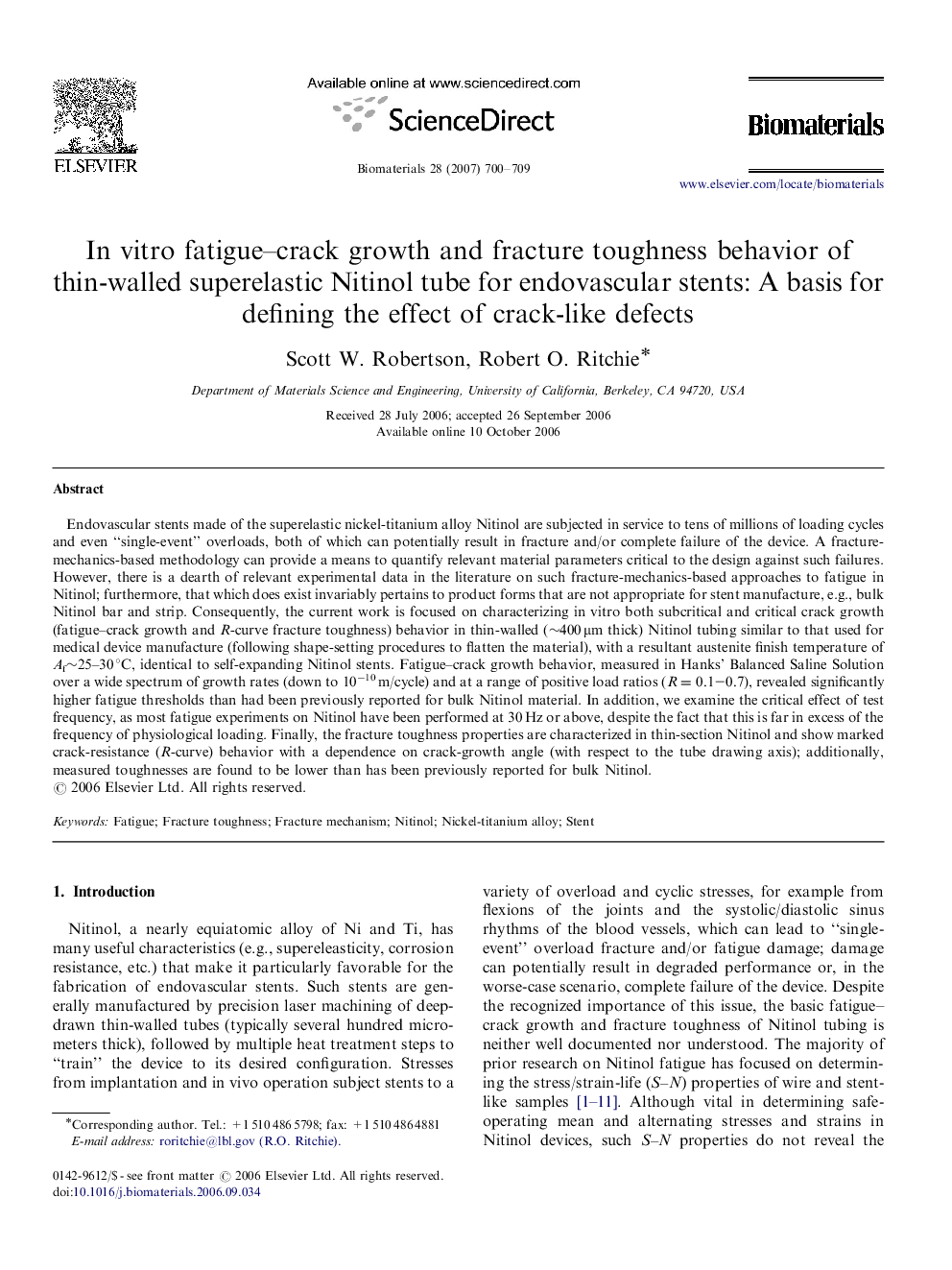| کد مقاله | کد نشریه | سال انتشار | مقاله انگلیسی | نسخه تمام متن |
|---|---|---|---|---|
| 11152 | 721 | 2007 | 10 صفحه PDF | دانلود رایگان |

Endovascular stents made of the superelastic nickel-titanium alloy Nitinol are subjected in service to tens of millions of loading cycles and even “single-event” overloads, both of which can potentially result in fracture and/or complete failure of the device. A fracture-mechanics-based methodology can provide a means to quantify relevant material parameters critical to the design against such failures. However, there is a dearth of relevant experimental data in the literature on such fracture-mechanics-based approaches to fatigue in Nitinol; furthermore, that which does exist invariably pertains to product forms that are not appropriate for stent manufacture, e.g., bulk Nitinol bar and strip. Consequently, the current work is focused on characterizing in vitro both subcritical and critical crack growth (fatigue–crack growth and R-curve fracture toughness) behavior in thin-walled (∼400 μm thick) Nitinol tubing similar to that used for medical device manufacture (following shape-setting procedures to flatten the material), with a resultant austenite finish temperature of Af∼25–30 °C, identical to self-expanding Nitinol stents. Fatigue–crack growth behavior, measured in Hanks’ Balanced Saline Solution over a wide spectrum of growth rates (down to 10−10 m/cycle) and at a range of positive load ratios (R=0.1–0.7R=0.1–0.7), revealed significantly higher fatigue thresholds than had been previously reported for bulk Nitinol material. In addition, we examine the critical effect of test frequency, as most fatigue experiments on Nitinol have been performed at 30 Hz or above, despite the fact that this is far in excess of the frequency of physiological loading. Finally, the fracture toughness properties are characterized in thin-section Nitinol and show marked crack-resistance (R-curve) behavior with a dependence on crack-growth angle (with respect to the tube drawing axis); additionally, measured toughnesses are found to be lower than has been previously reported for bulk Nitinol.
Journal: Biomaterials - Volume 28, Issue 4, February 2007, Pages 700–709